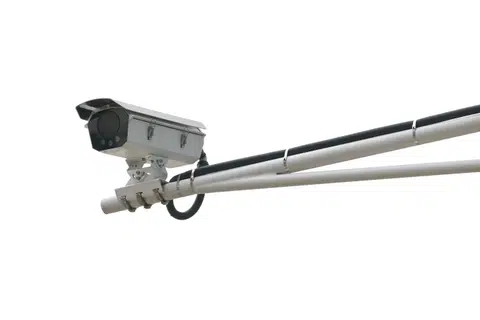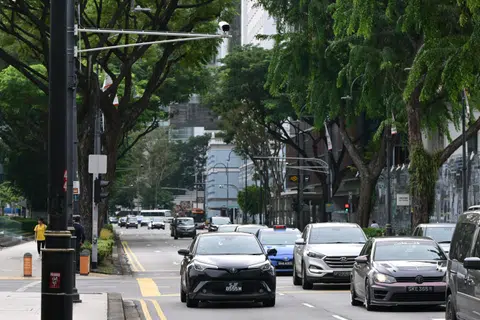Experimental camera-based ERP system being trialled till October 2025
An experimental project using street-mounted cameras and vehicle licence plate recognition technology to compute Electronic Road Pricing (ERP) charges is being put to the test.
The trial of the technology started in November 2024 and will run until October. There are no plans to roll out the technology, which is still in the exploratory stage.
Called ERP X, the experiment by Open Government Products (OGP), an independent division of the Government Technology Agency that builds technology for the public good, was one of 35 projects from OGP's Hack for Public Good 2024, a yearly hackathon.
Under the ERP X trial, nine cameras have been installed at different locations in the Bras Basah area. These cameras automatically recognise vehicle licence plate numbers, and toll payments are handled automatically through a smartphone app.
In contrast, ERP charges are processed through hardware installed in vehicles under the current system.
The Straits Times observed that in the Bras Basah area, the cameras are mounted on lamp posts and positioned to detect a vehicle's rear licence plate.
An OGP spokeswoman told ST that the trial is intended to gather feedback that will help the team understand the technology better, and it is working with the Land Transport Authority (LTA) on the trial.
The spokeswoman said: "We are still in the early stages of figuring out how this technology can be used effectively to improve road and vehicle usage operations, including enforcement."
She added: "There is a lot more development, testing and validation needed before we consider any large-scale application."
While OGP sees potential in this technology, the spokeswoman said the team is looking for ways to test different ideas and situations in which it can be used across the Government. "We will have many such explorations."
A spokesperson for LTA said the study was at an "exploratory stage" and it had no further information to provide.
Other than charging a user when a vehicle passes through a location, as with the current ERP system, ERP X could also open the way for distance-based charges.
"With enough cameras in place, we can track a vehicle's route and charge based on the distance travelled," the ERP X website said.

ERP X was started amid "practical challenges" with the next-generation satellite-based ERP 2.0 system, which will replace the existing gantry-based system, the team said on its website.
Some drivers felt ERP 2.0 was "somewhat obtrusive and inconvenient to use", the team added.
There had been concerns about the bulkiness of the new system's three-piece on-board unit, comprising a processing unit, an antenna and a touchscreen display.
In the latest quarterly update on the ERP X trial, for the first quarter of 2025, OGP said an "offences dashboard" has been set up for operations officers to review potential violations detected by the system.
These include off-peak vehicles spotted during restricted hours and lorries being driven with inadequate safety measures.
Twenty-six more cameras have also been installed, but the update did not state the locations, and they are not yet in operation.
As at the end of March, there were 162 participants in the trial, and the accuracy of the cameras in identifying vehicle licence plates was 95.4 per cent.
The trial incurred $362,773 in costs in the first three months of 2025.
ST signed up for the trial in March using the publicly available web link.
To be considered for the test, participants have to submit information such as the type of vehicle used, which may be a car, motorcycle or commercial vehicle, and whether the user has an iOS or Android mobile device.

Successful applicants will receive a WhatsApp text message with instructions on how to download the ERP X test app, which is accessible by invitation only.
Multiple vehicle registration numbers can be added to the app, which has an interface showing a summary of transactions. The app also shows the route and distance covered by the vehicles.
Meanwhile, the islandwide transition to ERP 2.0 is under way.
For now, around 430,000 vehicles out of Singapore's total vehicle population of just over one million have been fitted with the new on-board unit, said LTA. The installation of the hardware in Singapore-registered vehicles is targeted to be completed by 2026.
Lee Nian Tjoe for The Straits Times